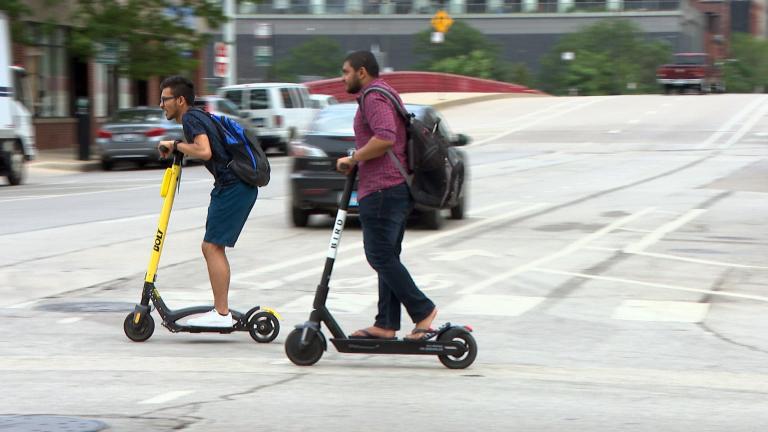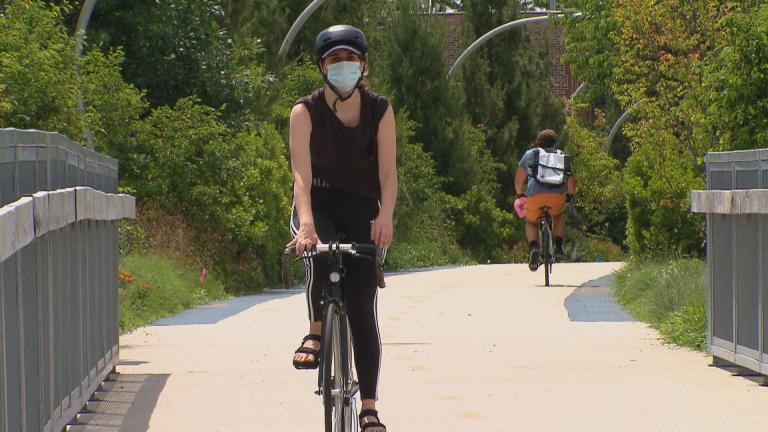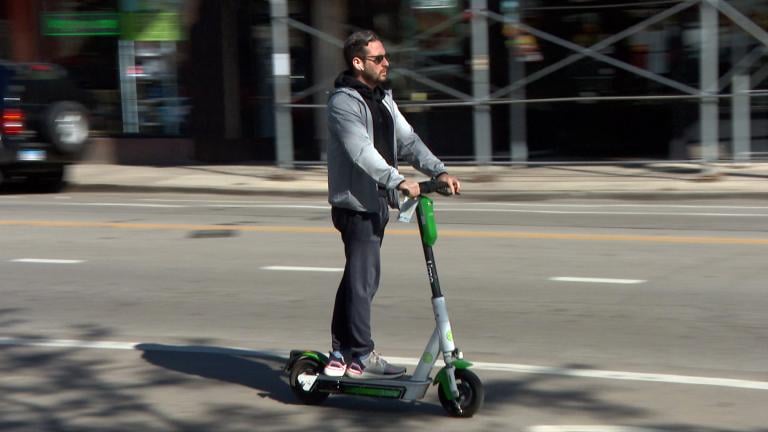For the past two weeks, electric scooters have been zipping around Chicago’s West Side.
They’ll be around until at least mid-October, when the city will either embrace or ditch the dockless transit technology at the end of a four-month pilot program.
So far, the city says the scooters have logged tens of thousands of rides in the pilot zone, which stretches across a 50-square-mile area on the West Side.
Candice Xie, CEO of Chicago-based scooter company VeoRide, called the initial response to the pilot “outstanding.” VeoRide is one of 10 vendors participating in the pilot.
”We have logged about 20,000 trips in the first two weeks. So I think it’s been great and we’ve seen a lot of people taking multiple rides,” Xie says.
Scooters have been lauded by some as an efficient “first-mile, last-mile” option, meaning they can help people get to and from their train or bus stops.
“Our goal is to help the city to reduce the traffic congestion. So we would love to replace as many single-driving vehicles as possible. Our goal is to make sure scooters are part of daily commuting options,” Xie says.
But across the pilot zone, high scooter usage has been accompanied by seemingly constant rule-breaking, like riding on the sidewalk or the 606 Trail, where electric scooters are not allowed. And it’s also led to a number of injuries.
Part of that, says Streetsblog Chicago editor John Greenfield, is inherent to the design of the scooters.
“When you’re standing on a scooter, you have a very high center of gravity compared to a bicycle. Most scooters have small wheels that don’t handle potholes very well, and you’re also not very visible to drivers from the side,” he said.
Greenfield also cited a study on scooter safety in Austin, Texas, that found a third of scooter injuries occurred during a user’s first ride.
“The positive aspect of that is, we can help bring the crash rate down by requiring the scooter companies to do more education,” he said.
Because the pilot is in its early stages, comprehensive data is not yet available to determine exactly how scooters are being utilized, or if some areas are safer than others. But Greenfield says he still sees potential in the program.
“One really good thing scooters could do for the city is replace trips from transit to destination that people are doing by rideshare now,” Greenfield said. “If people are hopping on a scooter instead, that saves them money, helps cut congestion, cuts pollution.”
But, Greenfield says, safety and crash statistics should be factored into any decision by the city to allow scooters to stick around … or to abandon them all together.
Related stories:
Ready or Not, Electric Scooters Arrive on Chicago’s West Side
Will Chicago’s Shared Electric Scooters Cut Emissions? It Depends, Experts Say
Chicago is Getting Electric Scooters – But Are They Safe?







